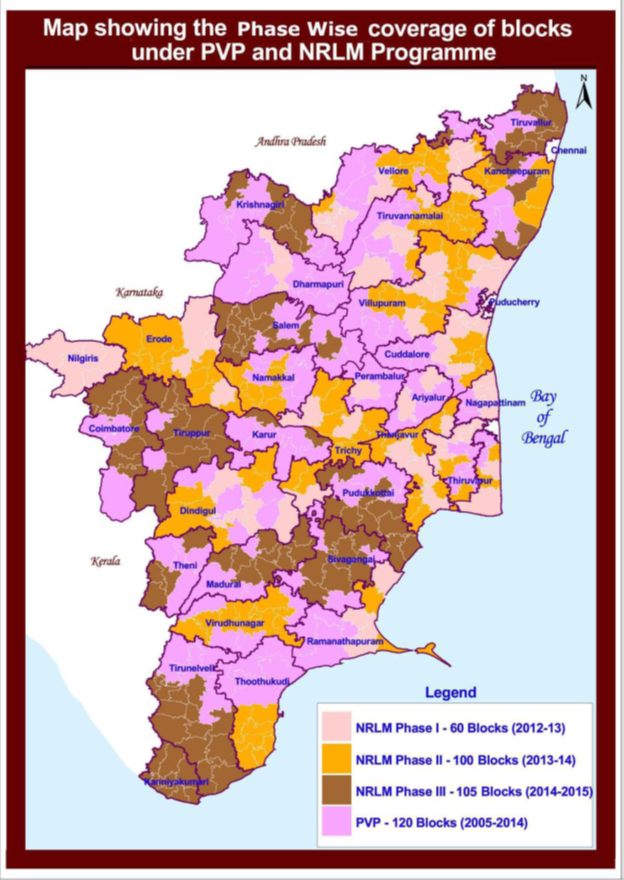This post introduces the reader to the National Rural Livelihoods Mission in India, focusing on how Tamil Nadu has adopted and internalized the national scheme within its existing infrastructures.The second part will look at how the program will be implemented in Tamil Nadu, its particular strengths, weaknesses, and achievements.
Introduction:
Aajeevika in Tamil Nadu
The deliverables:
- Formation of an effective autonomous implementation structure that facilitates strengthening of the rural institutional platforms.
- Inclusion of all the eligible poor, into the community based pro-poor village institution.
- Augmenting the corpus of the Institutions of the rural poor to leverage bank credit at affordable rate of interest.
Pooling of funds and convergence of other services through dovetailing of schemes for the development of the poor. - Incremental income in various livelihood activities and investment by the poor in productive assets.
5. Project Area and Scope
- Percentage of Agricultural Labourers to total main workers
- Rural female literacy rate.
- Industrial backwardness.
- Infant Mortality rate
- Number of BPL families Percentage of SC and ST population
6. Implementation

The Mahalir Thittam is a socio-economic empowerment programme for women. The scheme focuses on SHG formation primarily by partnering with Non-Governmental Organisations (NGOs). Mahalir Thittam was started in Dharmapuri district with assistance from the International Fund for Agricultural Development (IFAD). The Pudhu Vaazhvu Project is an empowerment and poverty alleviation project conducted by the Rural Development and Panchayat Raj Department with World Bank assistance. The majority of the NRLM in Tamil Nadu will be implemented through the Pudhu Vaazhvu scheme.
In the next posting, we will see how the program is being implemented, and what is its effectiveness.
